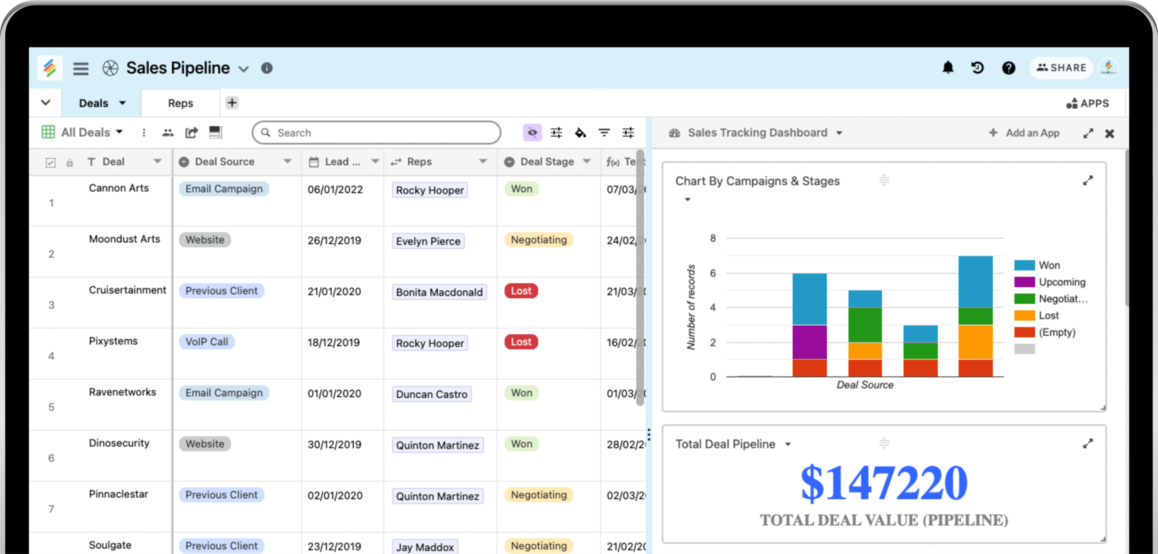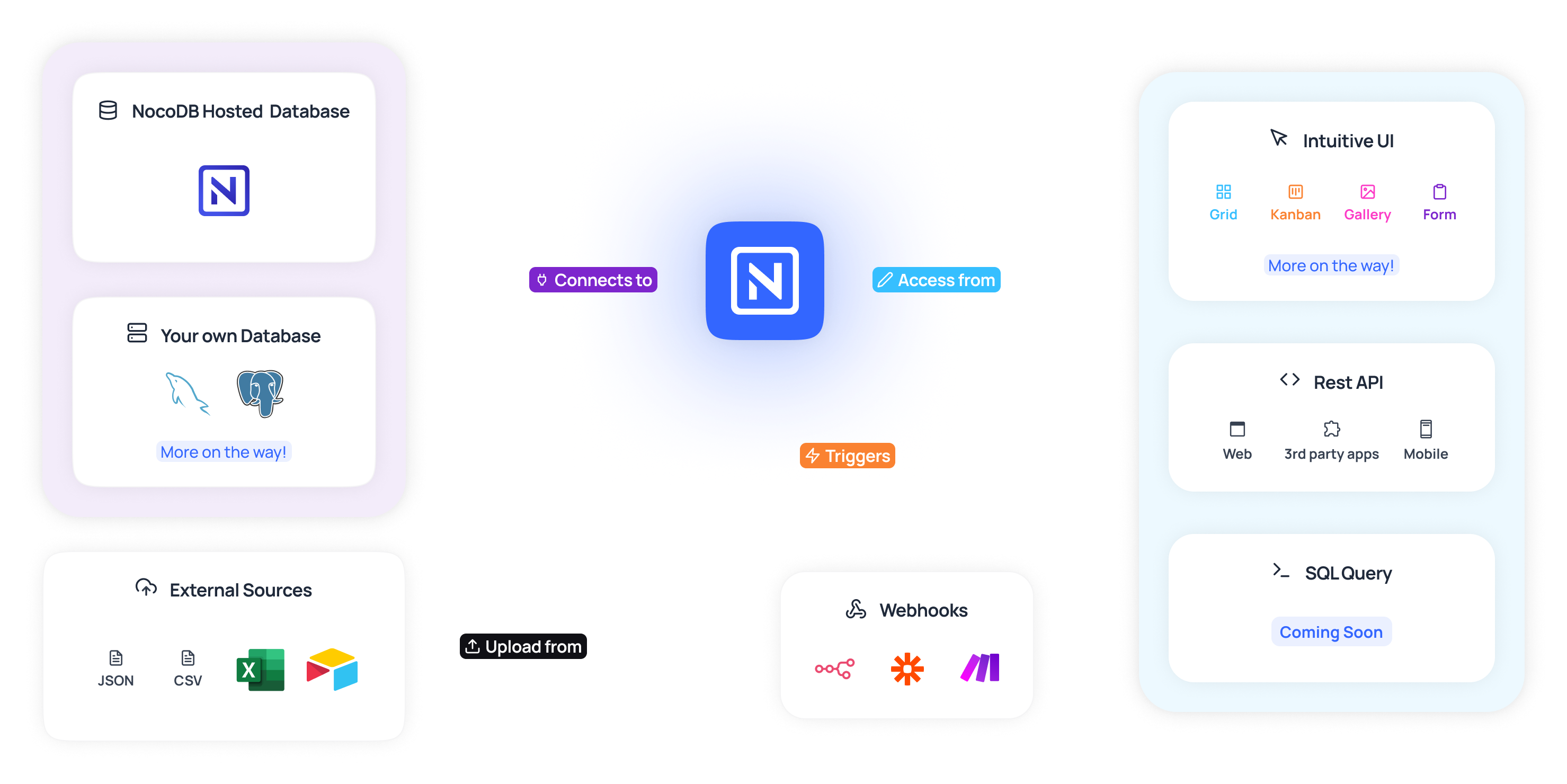Exactly How No-Code Tools Simplify Open Platform Data Source Development for Everyone
Exactly How No-Code Tools Simplify Open Platform Data Source Development for Everyone
Blog Article
Discover Just How Scalable Data Sources Can Be Made Use Of Without Coding to Enhance Your Service Operations
In today's fast-paced company environment, the capability to manage and analyze information efficiently is paramount. Scalable databases, especially when coupled with no-code solutions, offer a transformative strategy that equips non-technical users to streamline procedures. By utilizing tools that require no coding knowledge, organizations can enhance their operational capabilities while reducing dependancy on IT sources. The real question exists in recognizing just how these services can be tailored to specific business demands and what possible difficulties might develop in their execution. Checking out these aspects can brighten the path to operational quality.
Recognizing Scalable Databases
Scalable data sources are important for modern-day company procedures, permitting companies to effectively take care of raising volumes of information without compromising efficiency. These databases are designed to grow and adjust to the changing needs of a service, making certain that they can take care of larger datasets and more complicated inquiries as organizational requirements advance.
Understanding scalable data sources includes recognizing their two primary kinds: vertical scaling and straight scaling. Upright scaling, or "scaling up," involves including more power (CPU, RAM) to an existing server to boost efficiency. Conversely, straight scaling, or "scaling out," involves adding more web servers to distribute the lots, which often causes better flexibility and mistake resistance.
One more crucial facet is the architecture of scalable data sources, which can be either relational or non-relational. Relational databases, such as MySQL and PostgreSQL, are structured and use SQL for queries, while non-relational data sources, like MongoDB and Cassandra, supply more versatility with unstructured information.
Ultimately, understanding scalable data sources is vital for businesses aiming to leverage data as a critical asset, enabling them to remain competitive in a significantly data-driven atmosphere.

Benefits of No-Code Solutions
Opening the potential of no-code solutions equips organizations to streamline procedures and boost performance without the requirement for extensive shows understanding. These platforms allow non-technical customers to develop, customize, and manage data sources easily, thus equalizing access to modern technology across teams.
Among the main benefits of no-code services is their speed of implementation. Services can rapidly release applications and automate procedures, substantially minimizing the moment spent on development cycles. This agility allows organizations to react without delay to market changes and consumer needs, cultivating an one-upmanship.
In addition, no-code systems minimize dependence on IT divisions for everyday jobs, allowing technological teams to concentrate on even more complicated projects that require specialized skills. This change not just maximizes source allotment yet additionally promotes development within the company.
Cost-effectiveness is another advantage, as no-code options can reduce growth and upkeep expenditures. By lessening the requirement for coding know-how, companies can harness the abilities of their existing workforce without the overhead of employing extra employees.
Popular No-Code Database Equipment
The rise of no-code services has led to the emergence of numerous data source tools that accommodate organizations seeking effectiveness and accessibility. These devices encourage users with minimal technical competence to produce, handle, and control data sources effortlessly.

Caspio sticks out for its capacity to build internet applications without any coding. It enables services to develop robust data sources and deploy applications promptly, satisfying different market demands. Knack provides user-friendly interfaces and powerful data monitoring capacities, making it possible for companies to construct custom-made applications customized to their workflows.

Use Cases in Organization Operations
How can businesses take advantage of data source devices to improve their operations? Scalable data sources supply companies with powerful capabilities to manage and examine information without the demand for considerable coding expertise. These tools can streamline various business procedures, ultimately bring about boosted effectiveness and efficiency.
One noticeable usage situation is consumer Full Report relationship monitoring (CRM) Organizations can utilize scalable databases to track client communications, preferences, and feedback, allowing personalized interaction and far better service. By systematizing this information, groups can team up better and respond to client demands in real-time.
An additional considerable application is supply administration. Firms can employ no-code data source devices to monitor stock levels, track deliveries, and forecast demand. This ensures optimal inventory levels, reduces waste, and minimizes stockouts.
In addition, project administration can benefit from scalable databases by allowing teams to handle jobs, target dates, and sources in a linked system. With real-time updates and information visualization, project managers can make enlightened decisions.
Beginning With Application
Applying scalable data sources in organization procedures calls for a structured method to make sure successful integration and application. The initial step is to perform an extensive requirements analysis, determining particular company needs, data types, and expected growth patterns. This fundamental understanding will assist the selection of the suitable database remedy.
Following, select an easy to use, no-code data source system that aligns with your operational objectives. no-code. Lots of modern solutions offer intuitive interfaces, permitting non-technical individuals to manage information efficiently. After choosing a system, develop a clear information architecture that describes exactly how information will certainly be organized, accessed, and preserved
Training is crucial; make certain that staff member are geared up with the required skills to utilize the database. Think about providing tutorials or workshops to familiarize team with the system's functionalities.
Final Thought
To conclude, the assimilation of scalable databases via no-code services offers substantial benefits for service procedures. These systems empower non-technical individuals to effectively manage and examine data, promoting enhanced decision-making and collaboration. By embracing tools such as Airtable and Idea, companies can reduce and streamline procedures dependence on IT sources. Eventually, leveraging these modern technologies can cause boosted efficiency and operational performance, placing services for sustained development in an affordable landscape.
One prominent no-code database tool is Airtable, which integrates the functionality of a spread sheet with the power of a database.How can businesses take advantage of data source devices to boost their operations? Companies can make use of scalable data sources to track consumer communications, preferences, and comments, enabling individualized interaction and far better solution.Applying scalable databases in organization operations requires an organized approach to guarantee effective assimilation and utilization.In final thought, the assimilation of scalable databases via no-code services offers considerable top article benefits for business procedures.
Report this page